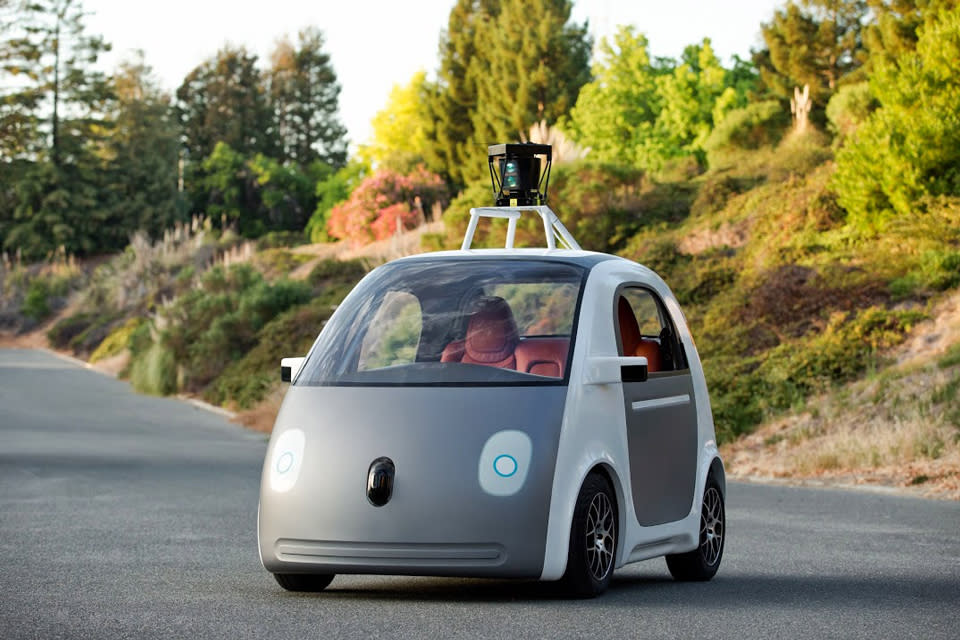Self-Driving Cars Get Realer: Google Ramps Up Production

Drivers, rev your engines (and then do nothing else). This week, Google indicated its self-driving car initiative is ramping up production faster than anticipated. Sarah Hunter, Google X's Head of Policy, revealed that the company plans to create several hundred units this year, up from Google's previous estimate of 100 units in 2015.
"This is not a car we're planning to sell," Hunter told the California Public Utilities Commission. "We're only making a few hundred of them. We're making them to enable our team to learn how to build a self-driving vehicle from the ground up. It's the first vehicle that's designed just for self-driving. It has no steering wheel, no brake pedals, no manual controls at all. All it has is a 'go' button, a 'please slow down and stop' button, and 'stop really quickly' button. The intention is for the passenger to get into the vehicle, say into a microphone take me to [a location], and the car does the entire journey for you."
This is undoubtedly a sign that the company is more optimistic about how the cutting-edge vehicles are progressing. However, there are still technological and business challenges that must be overcome before autonomous vehicles truly become viable.
"We haven't decided yet how we're going to bring this to market," said Hunter. "Right now, our engineers are trying to figure out ... how to make a car genuinely drive itself. Once we figure that out, we'll figure out how to bring it to market and in which way. Is it something that we manufacture at scale for sale to individuals? Or is it something that we own and operate as a service?"
It seems that Google feels it may go head-to-head with Uber in the near future, which certainly puts Uber's increased hiring of roboticists in perspective. Regardless, the market is still in its infancy, and companies like Google and Uber will need to create desirable cars that go over 25 mph before any real competition between them takes place.
Although the company's current prototypes are electric, Hunter hinted that when the cars hit the market, there may be hybrid models. And, even though the cars currently move at a gingerly pace, it's easy to imagine Google licensing the technology to major automotive brands who will create high-speed, high-performance self-driving models, if it doesn't decide to go it alone. However, to do that will require federal and local governments to revise current regulations. Google will face an uphill battle to change legislative minds, but proving the safety of its prototypes as it tests more will be a major step in the right direction, if it hopes to achieve its previously stated goal of reaching mass production by 2020.
Along with the expanded number of prototypes hitting the roads, Google is also venturing for the first time beyond California to Austin, to further refine its technology. The self-driving car may have a long road ahead of it, but it's clear that Google is well on its way to making it a reality.
